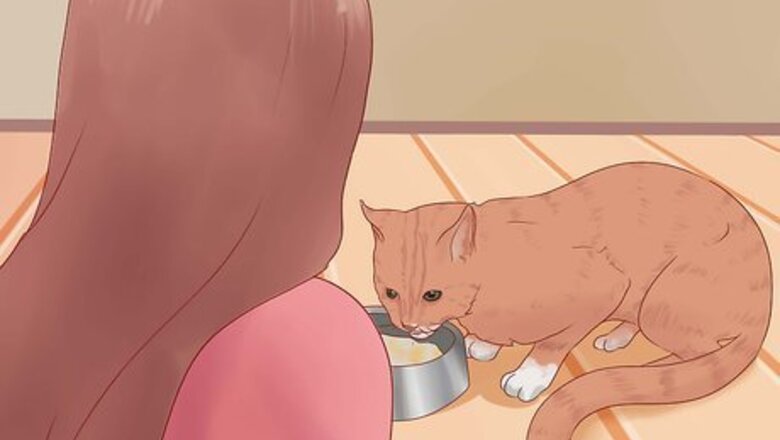
views
Getting Your Cat Inside Immediately
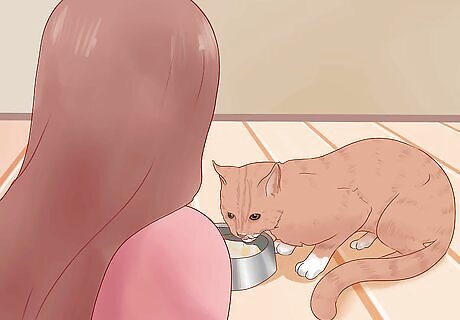
Use food to get your cat back inside. Only let the cat out when she is hungry. Take food away several hours beforehand so that she is partially focused on when the next meal is going to arrive. This way when you need her back inside, if she refuses to answer to her name try shaking the box of cat biscuits. When she comes running, be sure to reward her with food.

Call your cat’s name. Obvious of course, but if your cat doesn't respond in the first 30 seconds, she's either out of ear shot or not wanting to come in. If this is the case, don't let your voice betray your frustration. Instead, shut the door and do something else for 5 minutes, and then try again. A cat that is hiding may change her mind and be there the next time you call, once she realizes the open door is not permanent.
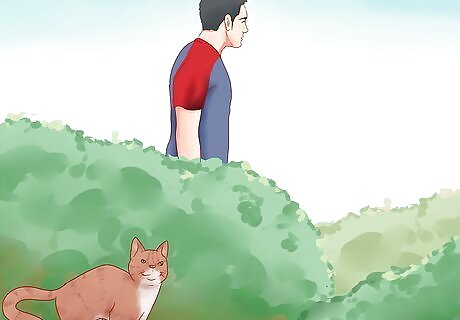
Search for your cat. If it's important to get the cat inside and you can't see her, go and look. If it's raining or the cat is fearful, she may hide under a bush and refuse to move. If she is hiding from danger, or merely keeping dry, she is unlikely to run off and you can pick her up to carry her indoors.

Do not vent your frustration at your cat. When the cat is ready to come in and she appears after hours of calling, don't vent your frustration on her. If you tell her she's a naughty girl for leading you a merry dance, or give her a gentle smack, she will associate coming inside with punishment. This will discourage her next time, and a vicious circle is established. If you are angry about how long she kept you waiting, or because you were worried, just walk away. At least this way she does not learn an aversion to coming inside. Cats don't respond to punishment. Positive reinforcement is much more effective.

Never chase your cat. On a similar note, never indulge in a game of chase to catch her. If she runs away, don't go chasing after her. This only reinforces her decision to flee, and very few people can outrun a cat, especially if she decides to go up a tree. The next time she sees you she will pre-emptively run and by chasing, you have taught her to run away rather than come to you.
Understanding Why Your Cat Might Not Be Coming Inside

Consider what has changed in your cat’s life. First things first. If your cat used to come inside, but now she refuses to come home, ask yourself what has changed. Has something happened, such as the arrival of a new dog, to make her feel insecure when inside? Take a look at her body language. Does she stroll around with her tail up, rubbing her head against furniture in a confident manner? Or does she skulk close to the ground, her head twitching from side to side on the look-out for danger? The latter indicates that she is scared about something she might encounter. If you fix this problem then the likelihood is that she will come home willingly once more.
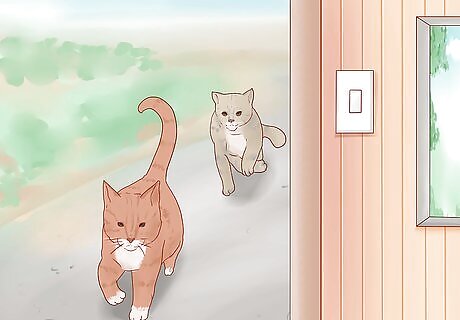
Understand that if a cat feels threatened, she will be less likely to spend time at home. If your cat doesn't feel safe, then she will prefer to remain outside and only come in when driven there by hunger. Take a look around you and try to see things from your cat's perspective. Does she get chased by another cat when she comes in? Can she cross from the door to a favorite sleeping place without having to pass a noisy washing machine? It doesn't take much to frighten a cat, so your aim is to eliminate the scary, and make the home as safe and welcoming as possible.
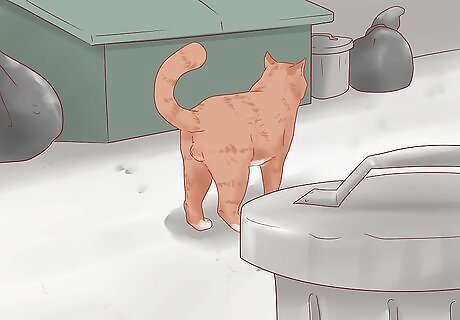
Consider whether or not your cat is neutered. Unneutered cats are more likely to roam, tom cats especially so. A tom has a strong hormonal drive to patrol his territory to secure it from intruders. Get him neutered so that his testosterone levels are no longer working against you. He will become more focused on home, plus he's less likely to fight and therefore at a reduced risk of picking up serious infections like feline immunodeficiency virus (FIV).
Training Your Cat to Come Inside
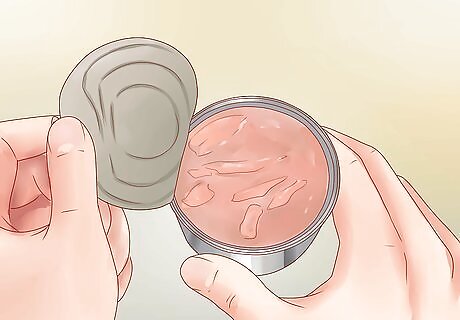
Find a food that motivates your cat. The key to training is finding a food that motivates your cat. Every cat is a sucker for at least one particular food, be it a flake of tuna, chicken, ham, prawns or even steak. You need to find out what food is the "must have" treat for your cat, the food that she will do anything for. This may take a bit of experimentation, offering different morsels until you hit upon the one she really perks up for. This food is going to be the treat you use as motivation.
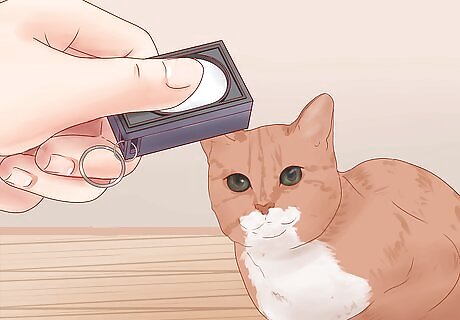
Decide on the cue that you want your cat to respond to. It might be her name, or a command such as "come" or "here", or it could be a clicker. The general idea is to get the cat to associate that command, or a "click" with getting her must-have treat. Start off by "clicking" each time you put her food down. Clickers are small handheld gadgets that make a loud "click" when you press down on the trigger. They are widely used in dog training, and are equally suitable for cats. Next, keep a supply of treats in a container in your pocket. When you are relaxing, for example watching TV, place a treat on your finger tips and hold within the cat's reach. Eventually she will stroll over for the treat. At the very moment she takes the treat, "click". Think of this as taking a photo of the good behavior. The importance of clicking at the exact moment she takes the treat is to strengthen her association between clicks and treats. Reinforce these first lessons by being consistent. Take every opportunity to get her to associate food with clicks. Teach her that clicks mean treats.
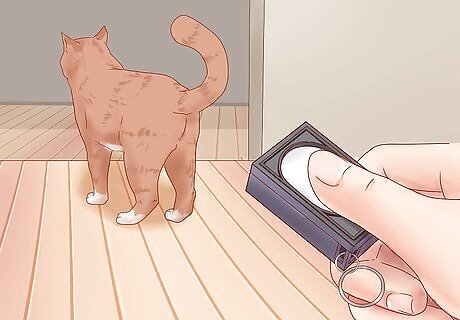
Begin making your cat work for her treats. Now she has learned that clicks mean treats, start making her work for the treat a little. Click when she is in a different room, and when she comes running, give her a treat and a click. Then several more clicks and treats so that she considers the trip it worthwhile. At this stage, you may want to try letting her out when you has an empty stomach. Initially, let her out of the door, and immediately click. When she comes for a treat, click again. Each time, let her wander a little further away before you click. The aim is that eventually, no matter where she is she will come to the click.
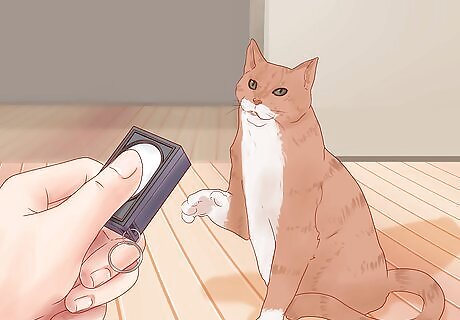
Keep training sessions short. Cats will not concentrate for more than 5 to 10 minutes at a time, and it takes repeated exposure to a command and reward system in order to train a cat. Try to keep each session short, 5 minutes or less, and repeat the sessions 2 – 4 times each day. If during a session the cat is looking around and not focusing on you or the treat, stop the session, and resume at the next allotted time.




















Comments
0 comment